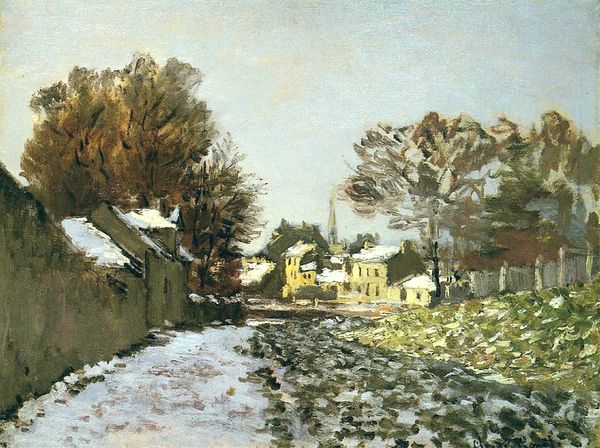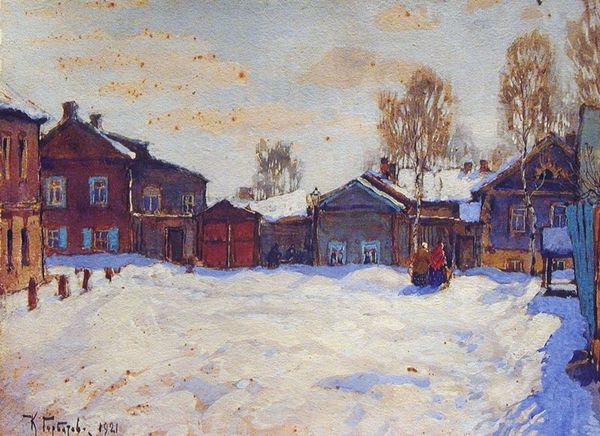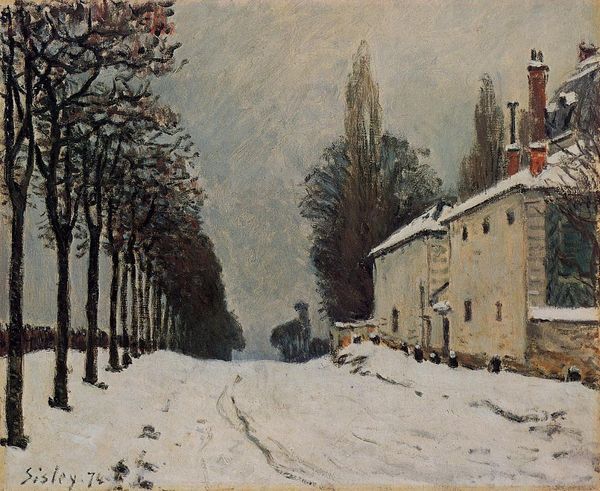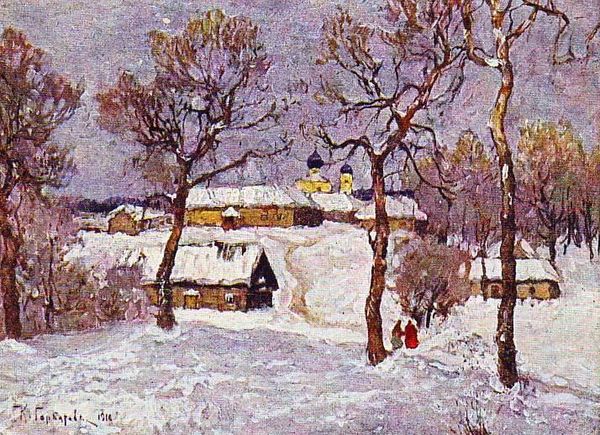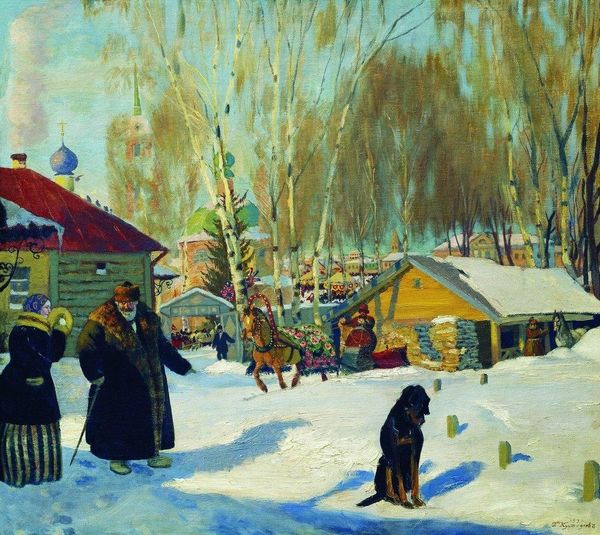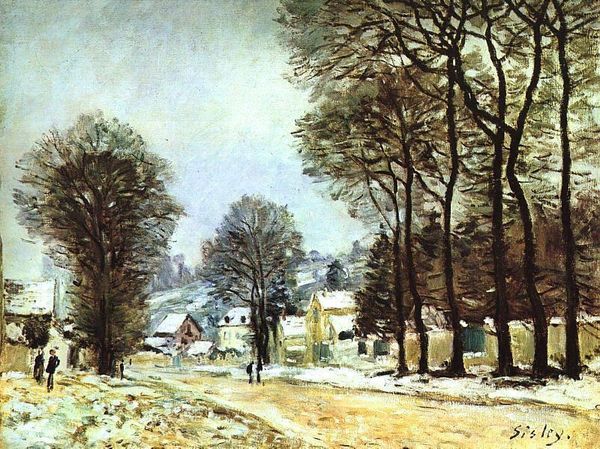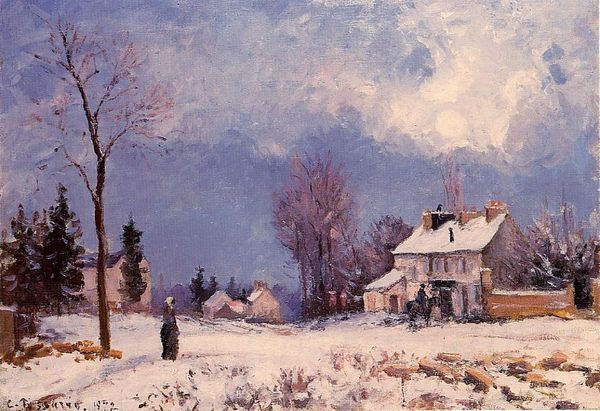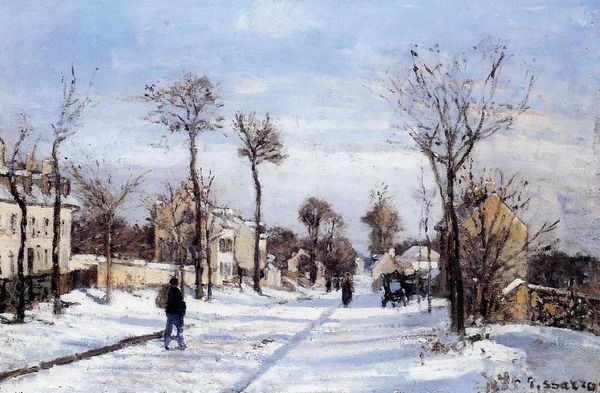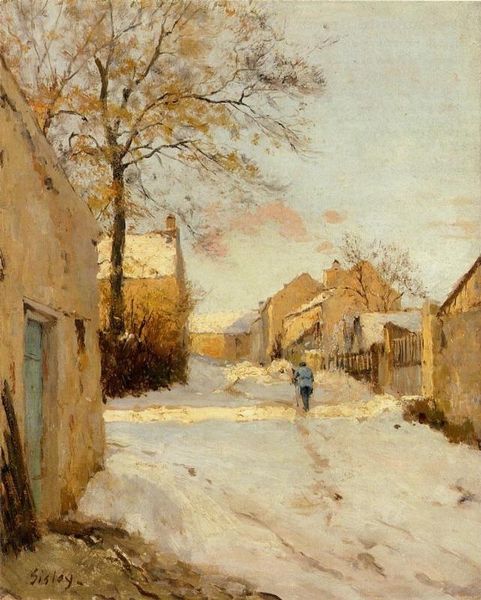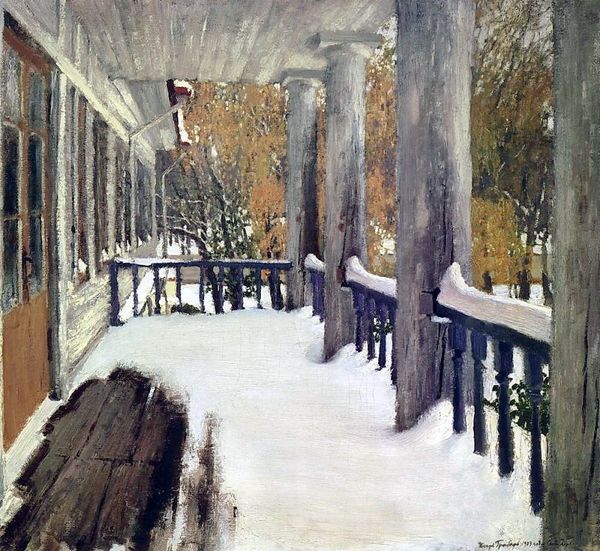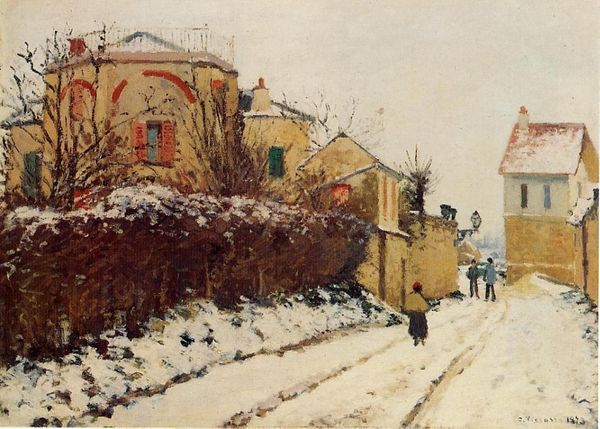
Copyright: Public domain
Curator: Andrei Ryabushkin's "Mikhailovsky Street in Novgorod," painted in 1899, captures a wintry cityscape. You can currently find it at the Tretyakov Gallery in Moscow. Editor: My first thought? A kind of quiet melancholy. The subdued palette, the solitary figure... it feels like a moment suspended in time. Curator: It’s fascinating how Ryabushkin often focused on scenes from everyday life, imbuing them with a sense of historical authenticity, rather than grand historical narratives. The late 19th century saw increasing interest in preserving national identity, and artists played a significant role in this. Editor: Absolutely. The lone figure immediately evokes a sense of journey. Her red shawl is a splash of vibrancy that seems to stand for more than just her clothes. I find the storks' nests sitting atop the trees compelling, since these nests have strong folkloric ties to home, birth, and family, but they're currently empty, signifying perhaps a hope for future returns to a spring state. Curator: That's a striking point. Also noteworthy is Ryabushkin's skillful depiction of the built environment. The architecture isn’t presented as grandiose or monumental but instead as very humble, showing traditional Russian homes and churches that would've been prevalent at the time. He portrays them plainly, suggesting the importance of appreciating heritage rooted in ordinary life. Editor: Precisely! Note the artist’s use of impasto, how thickly the paint has been applied in some sections of the work. This choice suggests the intense, heavy cold typical of Russia's winters and brings the eye to the small, specific elements—to their presence rather than just their symbol. It pulls them into focus. Curator: That impasto serves as an intriguing visual counterpoint to what could've become a merely documentary work. Ryabushkin is presenting the scene to invite deeper contemplation about heritage and home. Editor: It gives us more than just facts; we have a symbol-filled image. I leave with an echoed longing for home and heritage and perhaps, too, the chill in the air! Curator: For me, it highlights the importance of recognizing art as a window into the past, as well as our own enduring connection to places that have shaped who we are.
Comments
No comments
Be the first to comment and join the conversation on the ultimate creative platform.

